|
|
Post by Lee Martin on Nov 1, 2015 19:14:17 GMT -5
First shot of Hoover cast .452" Powder Coat 335 grain SWC Plain Base. Charge: 10.5 grains/HS-6, Winchester Large Pistol primer in Speer nickel case. Deep seated for COL=1.546". Crimp above front band. Fired from Freedom Arms M83 4-3/4"----with .45 Colt cylinder. Trunnion rest (nestle frame-barrel angle into padding). Range: 120 yards. (Revolver ZERO set two days prior for Hoover PC 280 SWC HP Plain Base @ 100 yards.) 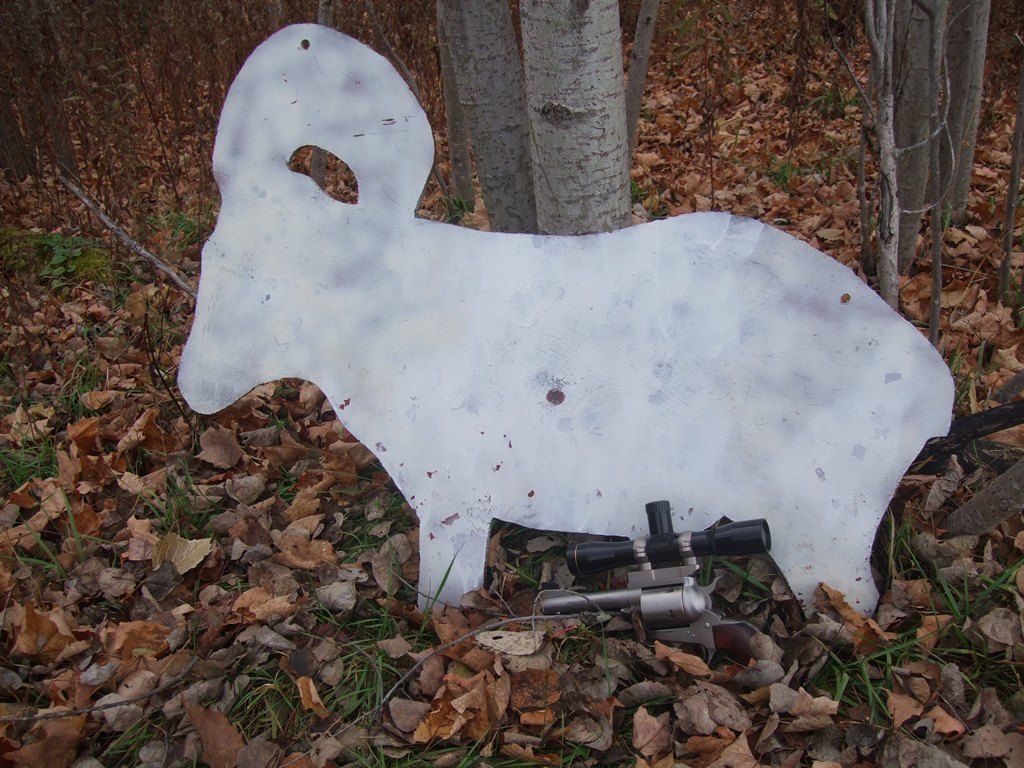 Powder Coat cast 335 SWC PB over 10.5/HS-6. After walking down to photo first shot, add four more. 120 yards 5x5=5.2" 4x5=3" Shot 1----"center" 2, 3, 4----7 o'clock 5----1 o'clock 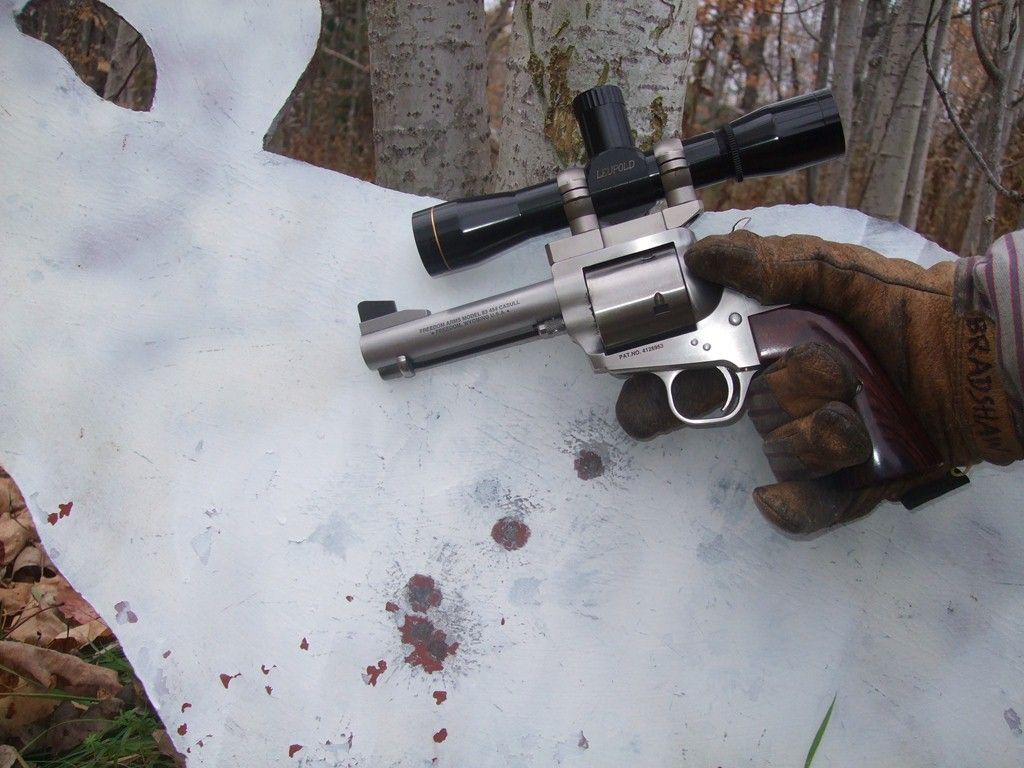 Ruger 03 Bisley Blackhawk as built by Ruger with Maximum ejector and Super Redhawk front sight. Ruger shortened Maximum ejector 1/4" completely ejects mag-length cases. 5-1/2" barrel with standard ejector and pinned sight blade shown for comparison. 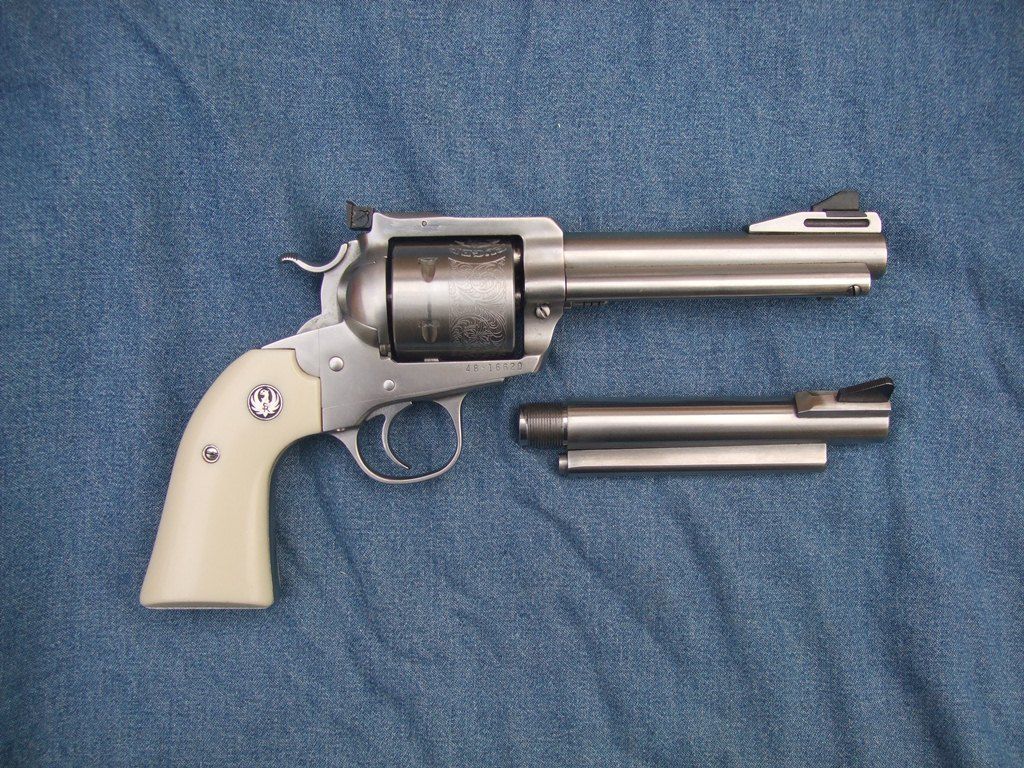 First threes hots fired from Ruger 03 with PC 335 SWC sailed over ram's bacl @ 120 yards. Rear sight was doped for PC 280 SWC HP @ 100 yards. Revolver poses behind punchured poplar sapling 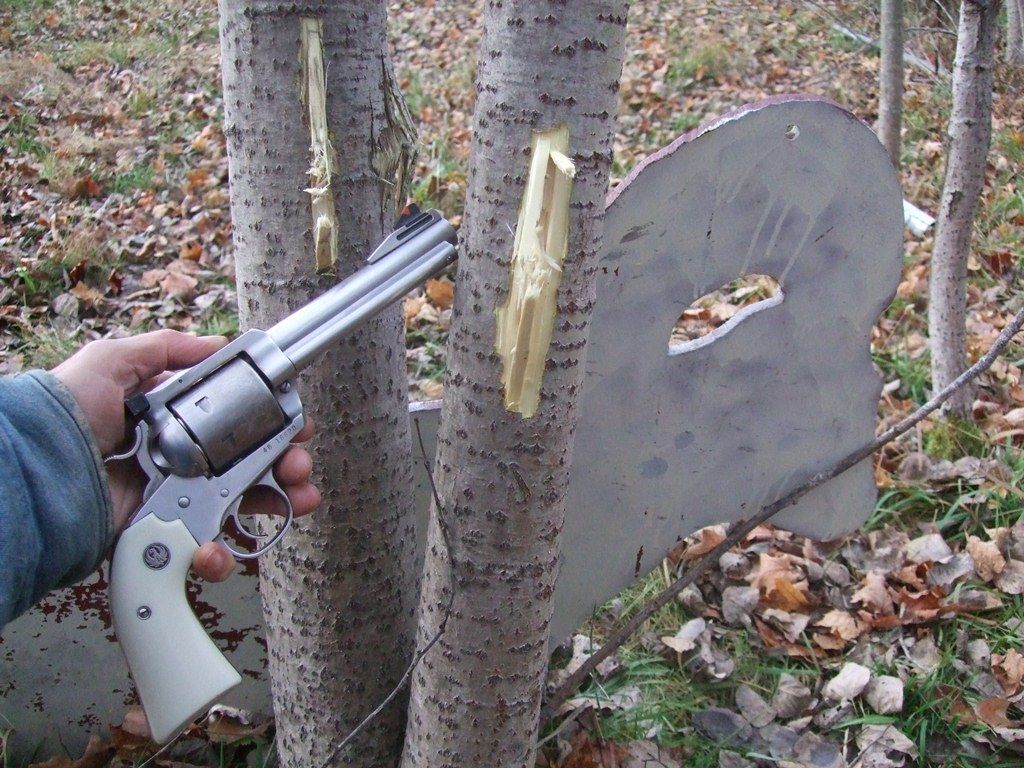 PC cast 335 SWC punctured 3" poplar, travelled 3' in a straight line, finally stopped by this sapling. Note bullet entered hole on left, bounced backward, with heal protruding 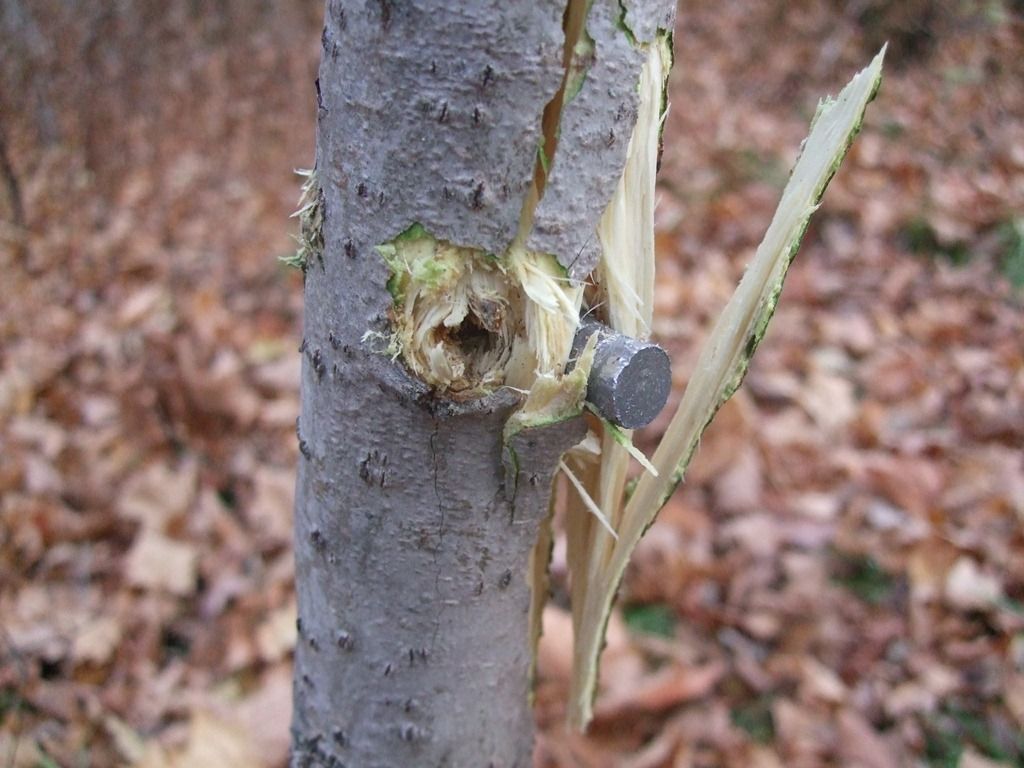 Jeff "Tank" Hoover powder coats, then bakes bullets @ 400 degrees. Tank believes the bake anneals (softens) the alloy lead. Expansion in soft poplar demonstrates the effect. 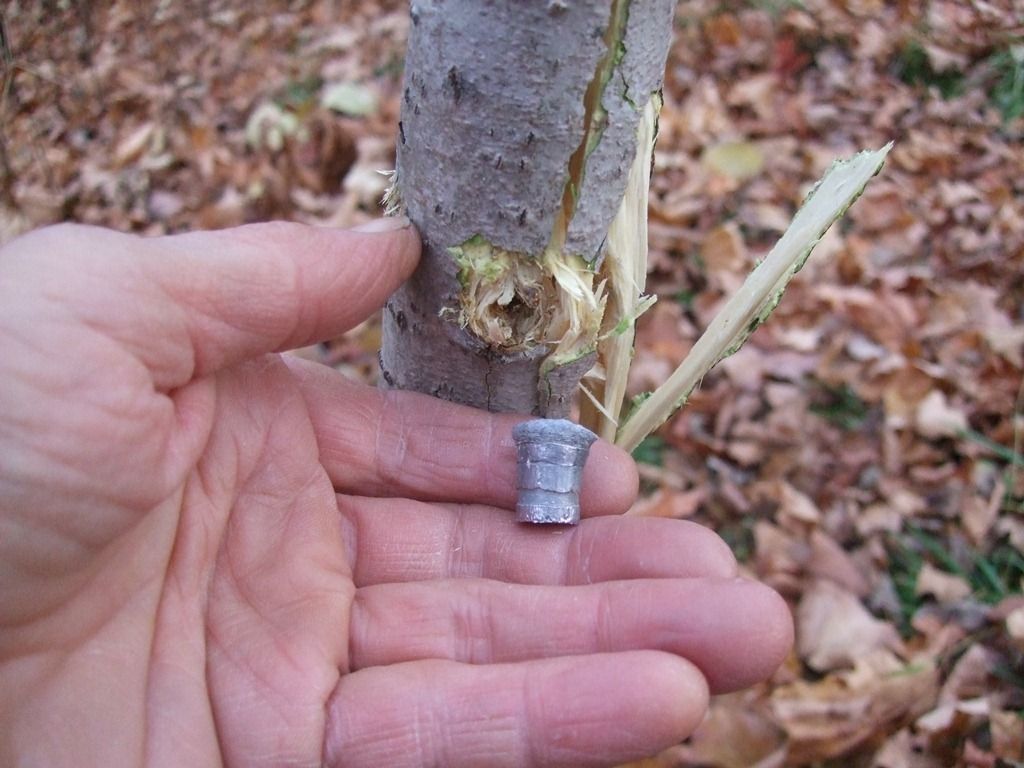 How else to achieve with an unjacketed lead bullet the punch expamsion provides----without leading? 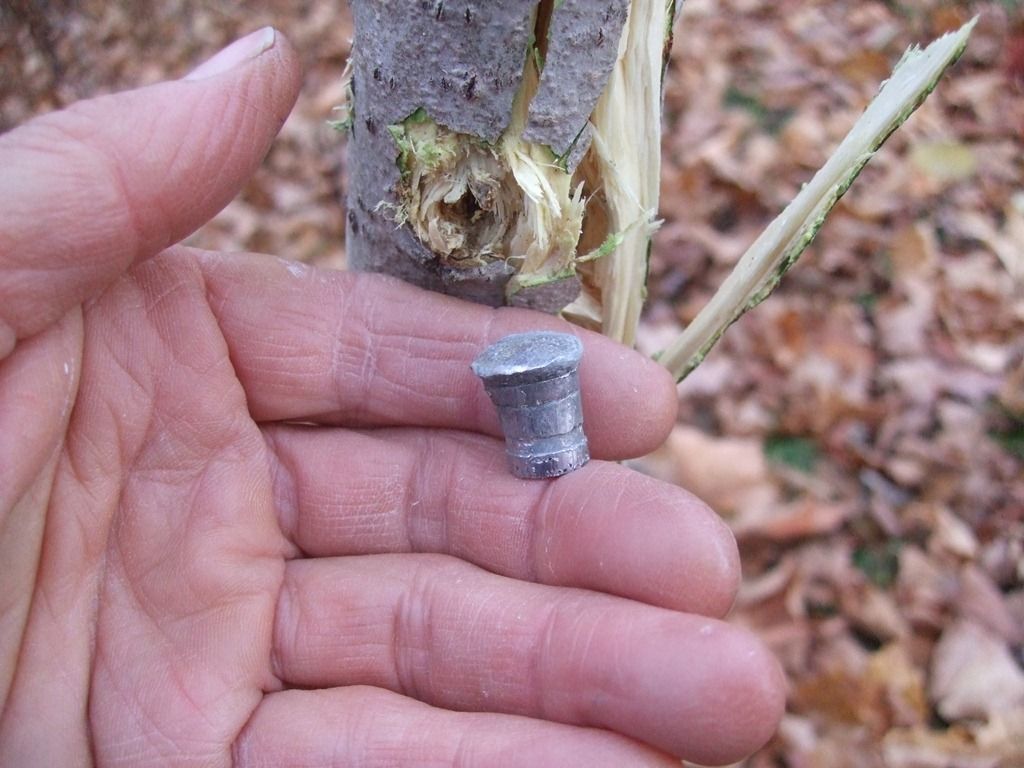 PC .452" 335 SWC----no leading with near pure lead punch. The ingredients of a PURE DEER BULLET 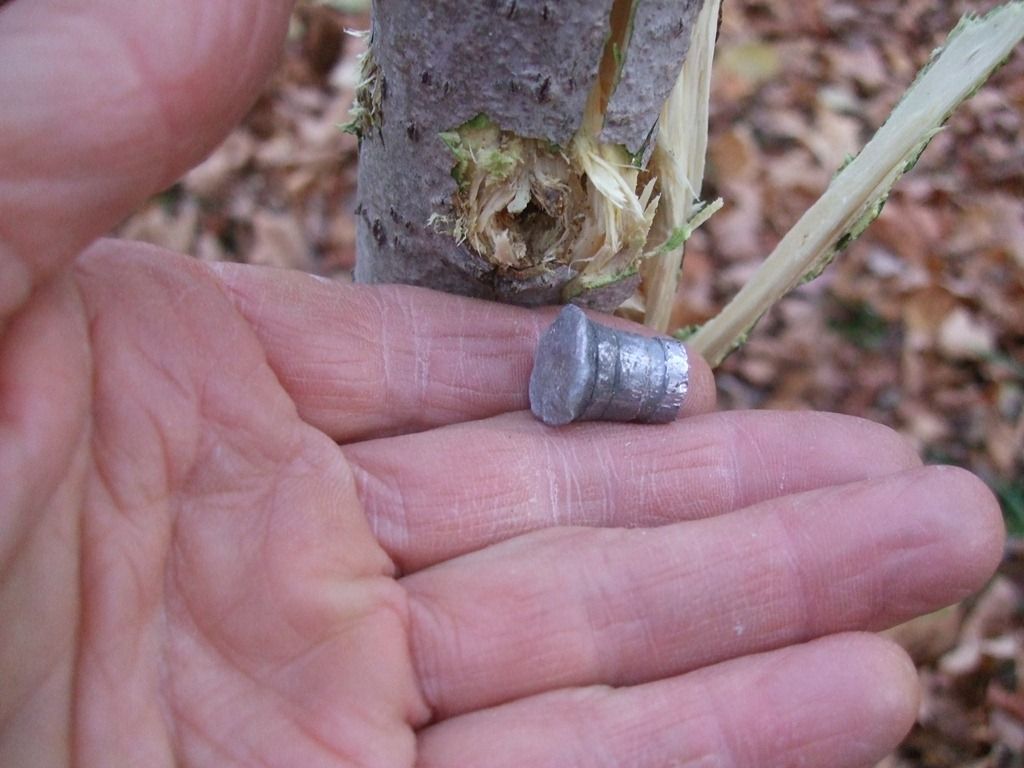 -Lee www.singleactions.com"Chasing perfection five shots at a time" |
|
|
|
Post by lscg on Nov 2, 2015 2:06:06 GMT -5
Excellent shooting Sir!
just the other day i was reading a Ross Seyfried Article on casting soft nosed bullets and he was saying it worked extremely well on Game because it gave expansion plus penetration. the above bullet appears to give a similar effect. to Mr. Bradshaw or Tank or Dick, any idea what the BHN is after baking the bullets? Just curious.
Zane. |
|
|
|
Post by hoover on Nov 2, 2015 7:25:04 GMT -5
Zane, I've measured them at around 10 BHN.
So David, after, shooting, handling, loading, fondling, what is your impression? Something to this PC process? Very good shooting by the way!
|
|
|
|
Post by bradshaw on Nov 2, 2015 7:32:33 GMT -5
Zane.... we'd better let Hoover answer the alloy and hardness questions.From age eighteen I swaged .357 & .44 bullets on a C-H Swage-O-Matic (sp?) press. The bullet is formed from pure lead wire, with a copper cup. Hornaday and Speer produced copper cups and lead wire. The lead was available both as pre-cut core and wire----C-H made an adjustable chopper. Didn't take me long to learn pure lead imparts beaucoup thump on meat. The late shooter/writer John Lachuck had posted an article, I think in Gun Digest, on the the ease of swaging handgun bullets.
The down side----the home-based bullets incorporate an un-lubricated, pure lead bearing surface, which starts to LEAD fiercely at about 1,100 fps. At 1060 fps from my M-29 6-1/2-inch, the swaged half-jacket 240 grain .44 punched like Joe Frazier's left hook.
Powder Coat (PC), with baking at 400 degrees Fahrenheit, imparts to the bullet near pure lead maleability----without leading the bore. A giant advance, particularly in a deer bullet.
David Bradshaw
|
|
|
|
Post by bradshaw on Nov 2, 2015 7:38:42 GMT -5
Thanks to slipping first three 330 SWC's from the a Ruger 03 over the ram at 120 yards and catching one of Hoover's .452" 330-grain SWC plain base bullets in a sapling, I see compelling evidence of the expansion so desirable in a deer bullet.
And Tank, many thanks, these bullets fly straight, certainly at distances indicated.
David Bradshaw
|
|
|
|
Post by contender on Nov 2, 2015 9:22:27 GMT -5
David,,, I see you are discovering that you can teach an old dog a new trick or two!   Powder coating fascinated me from the start. But I admit I was pre-exposed to it by USPSA shooters who were buying colored bullets. Then when Dick started playing with it, and shared his experiences,,, I had to jump in & try. About the time I started studying the PC thing,,, I'd received a shipment from Veral of 10 sticks of his lube. My sizers weren't empty,,, so I was ok, and I decided to try the PC method Dick described. I still have 10 sticks of Verals lube,,, unwrapped, and my sizers still have lube in them. Using PC bullets has been an eye openers, and for me,,, reduced the smoke to where I can see follow up shots quicker. In USPSA,,, quick shots are normal, and you have to be able to see,,,,,,! The smoke off lubed bullets was why I went to plated bullets a long time ago. Using PCed bullets has been a lot of fun, and educational. |
|
|
|
Post by bradshaw on Nov 2, 2015 10:13:15 GMT -5
Tyrone.... indeed, PC bullets shoot clean. Tank wanted my take on overall performance; Vol. 82 & 83 are a start. I am very impressed, as the major discovery indicates the elastic behavior of PURE LEAD, even though these bullets are alloys. Years ago I had silhouetters telling me of deer traveling huge distances, sometimes to not be recovered, after taking chest hits with hard cast revolver bullets. Some cast bullet devotees are loathe to admit a proper jacketed revolver bullet kills efficiently. The magic step in powder coating takes place in the oven, where I am confident exposure to 400 degrees fahrenheit for one-half hour produces a high impact bullet.
Certainly, the guns remain cleaner from shooting powder coated bullets. Yet it is the HEAVYWEIGHT punch effect which has my attention. (Which attention could not exist without ACCURACY.) To compare accuracy against the same bullets passed through size & lube, the two bullets must be shot head-to-head through the same guns on the same day. My guess is you start with an accurate conventionally cast bullet and end with an accurate PC bullet. Any difference in accuracy only the target can say.
David Bradshaw
|
|
|
|
Post by 2 Dogs on Nov 2, 2015 10:15:37 GMT -5
Been screaming that about hard cast for years....
|
|
|
|
Post by hoover on Nov 2, 2015 16:20:48 GMT -5
David, much thanks for your replies. You know I respect your opinion, but have responded to some of your statements, for discussion purposes only, not to nit pick, but to pick your brain, for the sole purpose of exchange of information and ideas. “Years ago I had silhouetters telling me of deer traveling huge distances, sometimes to not be recovered, after taking chest hits with hard cast revolver bullets.” I would be curious to know of the type of bullet used in such instances? Were they large flat-nosed SWC’s, or more sleek, aerodynamic styled roundnoses, or bullets with a small flat? Whenever I hear of bullet failure, my first thought is bullet placement. Where was the animal actually struck? I’ve never seen a double lung struck deer travel more than 100 yards, with jacketed, or cast, from rifle, muzzleloader, sixgun, or bow and arrow. Usually, it is much shorter, as in this side of 50 yards. I’ve personally seen a dozen deer go no further than 30 yards, and a large cow elk wobble only 3 steps, after being struck with hard cast SWC bullets. Only hit one lung, and you will be on a merry chase! I am suspect to “chest hits” as in, is the whole rib cage considered chest, past the lungs, into the diaphragm, or above the lungs, but below the spine, where deer are void of main arteries? “Some cast bullet devotees are loathe to admit a proper jacketed revolver bullet kills efficiently.” While jacketed bullets can obviously kill deer, I’ve never denied their effectiveness. As one takes pride in their own handloaded ammunition, casting ones own bullets just carries the theme closer to home. I enjoy being the maker of the chunk of lead that passes through the vitals of the animal I kill. For some warped reason, it makes me feel more connected to the hunt. Besides, I hate paying for bullets!!! “My guess is you start with an accurate conventionally cast bullet and end with an accurate PC bullet. Any difference in accuracy only the target can say.” While that statement is true, it reinforces that you do not lose anything by PC bullets. However, I have personally experienced the inverse of that statement with PC bullets, in that I have taken inaccurate slugs, and turned them into shooters through the PC process. This was especially true, and most notable with Marlin leverguns. I’ve never seen PC retard accuracy, but have surely seen improvements in accuracy. Just some thoughts and observations on my part. Feel free to add or debate to my responses. I love hearing what you have to say! "Been screaming that about hard cast for years...." Fermin, you've been screaming about everything for years.....    |
|
|
|
Post by bradshaw on Nov 2, 2015 18:22:38 GMT -5
Tank.... I would take your .452-inch "335 SWC" Powder Coat dear hunting in a Jack second. The same cannot be said of a same-shape hard cast bullet.
Two silhouetters to told me of deer lost to hard cast semi-wadcutters in .44 Magnum with, in both cases, a "chest hit." Of course, neither I nor anyone else can confirm a "chest hit" in the absence of a carcass. All I knew at the time was both silhouetters were far more consistent pistol shots than a so-called average shooter. Numerous other silhouetters hunting with hard cast reported a spectrum of kill times. While we have no way to ascertain this, I suspect many more silhouetters have done their deer hunting with jacketed expanding bullets.
This much I know: a .44 240 grain swaged semi-wadcutter half-jacket punches with aplomb when started at a lowly 1060 feet per second. One must have faith in his or her equipment to pay attention on the trail.
A 6mm Remington or .243 Winchester loaded with a proper 100 grain bullet makes better lung medicine for deer than a .338 Win Mag stoked with the hard-as-nails 225 grain Trophy Bonded Bear Claw.
David Bradshaw
|
|
|
|
Post by sixshot on Nov 2, 2015 19:26:35 GMT -5
I agree its hard to positively call it a chest shot when you don't recover the deer, sometimes funny things happen right at the break of the shot. You could count the number of deer I've taken on two hands, but it would take many hands & many feet to count the number I've taken with cast bullets. I'll give the credit to 2 things. First is always the most important & thats placement, but with cast another thing I've always done is shoot as soft of an alloy as I could get away with. If the bullet was starting to skid & not giving me the acccuracy & velocity I wanted I bumped the hardness a bit, but not much. I never, ever jumped on the hard bullet bandwagon & ran my bullets 1400 fps like many. Its easy to get a pass through with good cast bullets at 950-1100 fps almost every time. If I was hunting elk I bumped things a bit but not much, after 13 elk with sixguns I've never lost one & never recovered a bullet. Most all of them were killed at about 1100-1200 fps. Now with the PC bullets & a BHN of around 10-11 & a poor boys GC you can run them 1300+ & get amazing results if need be. Even on my bull moose I was only running about 1050 fps & got a complete pass through with a soft cast slug.
If accuracy is there forget the hardness, but you must have the accuracy.
Dick
|
|
jsh
.327 Meteor
 
Posts: 884
|
Post by jsh on Nov 2, 2015 20:07:31 GMT -5
Good info gents.
David, I have shot IHMSA for enough years that here in kansas I have seen in years past, so so results on steel with cast. But, after I started casting I have yet to "ring" any of the steel critters. My alloy is usually wheel weights sweetened with some dead soft and some tin. I have seen pigs rang with 240-260 grain cast bullets, made from Lino type. My thoughts were that they shattered rather than put all their energy on to the animal. Same thing on rams set with the topple point.
The years I saw ringers with cast were in the late 80's to the early to mid 90's, still a fairly large number of shooters then. The folks were still trying to keep trajectory as flat as possible, thus the speed. Which in turn lead a great many down the road of "hard cast" being the cure all to leading with the speeds they were after. A few cast but a lot bought bullets.
There are still a lot of myths out there. Some that will probably never go away just because, there is so much in print, and so many that have ill fitting, poor lube and the wrong alloy for the job.
Size is king.
A good lube will help a softer alloy do a lot more than most folks will believe.
PCing I honestly think is here to stay. As Jeff mentions it will make CB shooters out of some of our pickier firearms.
Dick and Jeff, I still have to shoot lubed bullets once in a while. I miss the smoke and goo, lol.
Jeff
|
|
|
|
Post by hoover on Nov 2, 2015 20:13:58 GMT -5
David, in the pure spirit of debate and conversation, I did, and do follow the hard cast school. Readings from Veral Smith, and then Ross Seyfried reinforced these thoughts. A properly sized bullet can be driven faster, without leading, and more accurately than a softer, traditionally lubed/sized bullet. The key is the bullet nose. A nice flat, or meplat causes much tissue damage as it creates a wake, much like a boat in water, only wider than the meplat itself, the faster it is driven. Of the dozen or so deer, and 1 cow elk taken with cast Keith style bullets, all about 20 BHN, I have never lost a critter. Maybe I've had dumb luck, but the furthest of these went a whopping 30 yards. The cow elk, 3 wobbly steps. Heresy is a funny thing, and it was you who told me to shoot first, then write about it, and that is what I'm doing. Here is a picture of the lungs of the cow elk I shot in '09 in Idaho. For a hard cast Keith bullet, it surely didn't do her any good. 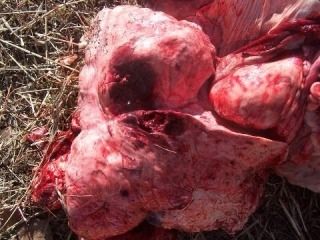 Here is a heart from a whitetail buck that was struck with a hard cast Lyman 454424 .45 Keith from the same box of hand loaded ammunition from the Idaho elk hunt. I'll take luck over skill anyday, and with my hard cast slugs I was mighty lucky! Hope the luck holds out with the PC slugs. 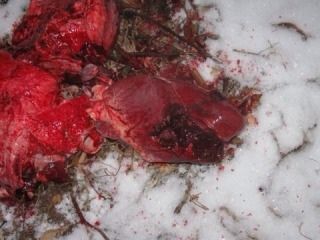 Lastly, I'm not trying to be argumentative, just sharing what I've experienced. A picture is worth a thousand words, as I am trying to credit my results with some. Nothing more, nothing less. |
|
|
|
Post by bradshaw on Nov 2, 2015 22:48:47 GMT -5
Jeff (jsh).... Ed Heers, who went down in the plane with Joyce Hornady, and I argued bullet hardness in the context of impact and dwell time on steel silhouettes, my contention being that soft lead pushed more reliably, evidence of long DWELL TIME. You and I and many others have seen the cloud of a super hard bullet vaporizing on steel. In your own state of Kansas, Nolan Jackson, maker of Wichita actions, and bolt action pistols and rifles, told me of two Sierra 200 grain bullets from his .308 unlimited pistol disintegrating on rams---without knocking them over----in the same match.
Certainly a digression from the Powder Coat story, it nevertheless relates, and anecdotes count towards wrapping one's skull around what I see as a major attractant to powder coating----plastic deformation IN TARGET as a communicator of PUNCH. To put it Country Simple, once inside target, the wadcutter effect.
As for using velocity to offset trajectory and wind drift in silhouette, I avoided that race, while always believing gravity and wind, and ready to use a screwdriver.
David Bradshaw
|
|
|
|
Post by bradshaw on Nov 2, 2015 23:14:54 GMT -5
Tank.... carry on. Your success with hard cast leaves no room for arguement. Against your preference, I suspect Powder Coat bullets soon will carve a reputation for clean kills afield. And I support Dick's contention that the anneal makes hollow pointing to increase shock unnecessary.
David Bradshaw
|
|